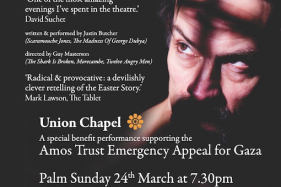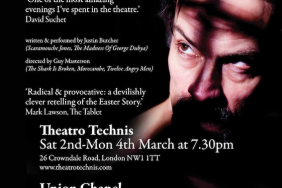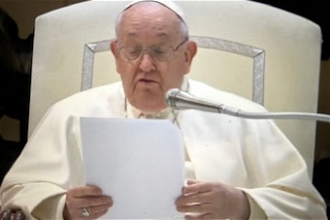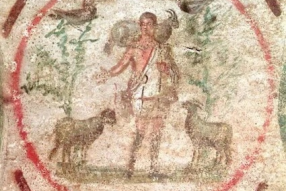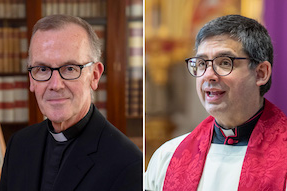Signis statement on The Rite
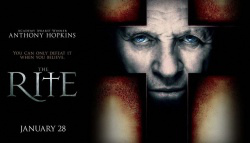
SIGNIS, the World Catholic Association for Communication and Media has issued the following comments on The Rite.
For almost forty years, since The Exorcist was first released in 1973, demonic possession and exorcisms have been in the forefront of films which combine horror with the life of the Catholic Church. The Exorcist led to three sequels and, in recent years, two prequels. A 1976 case in Germany was the basis for Requiem as well as for The Exorcism of Emily Rose. And there have been quite a number of minor and exploitation films.
This is the movie setting for The Rite.
However, a significant part of the context for The Rite is the introduction of a course in Rome, well publicised and sometimes sensationalised by the media, for instructing exorcists. Interviews with some of the exorcists, especially in Italy, have been published. Several books have been written. The screenplay for The Rite is derived from a documentary book by Matt Baggio.
It should be said that The Rite is particularly Catholic-friendly. Catholic audiences who are getting older would be more at home with the film, especially the first part. Younger Catholics could be intrigued by the information given and follow through. Christian believers will find the film interesting. Believers in the transcendent would be open to the events and the interpretations. Rationalists and sceptics would (and have) dismissed the story as ecclesiastical mumbo jumbo and superstition, a variation on themes for horror movies.
The question arises about the reality of demonic possession and and the rituals for exorcising demons. Apart from the movies, this is not part of the experience of the vast, vast majority of Catholics who have never met an exorcist nor anyone who has been possessed.
The film makes a reasonable case for possession (without any explicit reference to Gospel stories or Jesus' own casting out of devils). It offers some plausible enough scenarios (though they are in Italian settings, more emotional than in Anglo-Saxon, Celtic traditions) and shows the rituals, the unpredictable nature of demonic behaviour, the energy demanded of the exorcist in praying and confronting evil.
The Rite has strong credentials. The Director is Swedish Mikael Hafstrom (whose credits include the thriller 1408 and the Swedish film, Evil, about a malevolent schoolboy). The writer is Michael Petroni who did the screenplay for The Chronicles of Narnia, Voyage of the Dawn Treader. It is 'inspired by' (not based on) material from a book on possession, exorcism and the story of Fr Gary Thomas, The Rite: The Making of a Modern Exorcist, by American Italy-based investigative writer, Matt Baggio. Fr Gary Thomas is parish priest of Sacred Heart, Saratoga, diocese of San Jose, who, when he went on sabbatical, his bishop asked him to attend the exorcism course in Rome. He did not have a crisis of faith (as his fictional counterpart in the film does). He was appointed exorcist for his diocese and works with a team of psychologists, psychiatrists and other priests. He says that most of those who approach him suffer from mental illness rather than possession. He sees his work as a healing ministry of the Church. (Googling Matt Baggio leads to information about the book. Googling Fr Gary Thomas will bring up the video (about.com) of the premiere of The Rite, a talk with Anthony Hopkins and a helpful interview with Gary Thomas.)
Even while the Warner Bros logo is still on screen, we hear a voice ask 'Do you believe in sin?'. Then follows something unusual for a commercial film, a papal quotation. It is from John Paul II about St Michael casting Satan down to hell, something which must continue today. Part of the reason for Catholics being at home with the film, is that in the early sequences we see crucifixes, rosary beads, statues of the Sacred Heart, Mary, St Therese and a recurring picture of a Guardian Angel.
The film is in two parts, each asking for a different response from the audience. The first part focuses more on theory, arguments pro and con possession; the second shows cases, which move the action into a more melodramatic phase.
The first part is more 'reasonable'. A young man, Michael Kovaks (Colin O'Donogue), helping his father in his mortician's business, decides to get away from home, receives a scholarship and goes to a seminary. At the time of his diaconate, he has doubts about his personal faith and asks to leave. When his seminary director slips in ice and causes a car to swerve and hit a girl on a bike, Michael, the young seminarian, is asked by the dying girl for absolution. He prays over her, very movingly. His superior (warning him that were he to leave he would forfeit his scholarship and would have to repay it - money and the American Church!) sends him to Rome for the course in Exorcism.
The scenes in the course, delivered by a Dominican, present the questions and queries an audience might have about possession and exorcism. Psychological arguments about mental illness are put forward and whether psychotic behaviour could be confused with possession. A figure (open to query) is given: half a million possessions reported to the Vatican each year and 'orders sent down' that there should be an exorcist in every diocese. The statistic at the end of the film mentions that, in fact, there are only fifteen in the US. There is also talk of there being, just as with angels, a hierarchy of demons. The exorcist needs to elicit the name of the demon who fears being named.
Michael is sent by Fr Xavier, the lecturer (Ciaran Hinds), to visit an old Welsh Jesuit who lives out of Rome, a former doctor, who has performed many exorcisms, Fr Lukas. Anthony Hopkins, giving an intelligent and generally restrained performance, is Fr Lukas. He invites Michael to observe and participate in examinations of the possessed (a pregnant 16 year old girl who had been raped by her father, a young boy who has mule prints on his back and torso, both of whom know secrets about Michael). Michael talks things over with a young woman (Alice Braga), a journalist who is doing the course, researching a feature article.
The second part of the film may not appeal so much and could give audiences a fright. As might be guessed, the exorcist is open and vulnerable to demonic attacks. Fr Lukas himself is taken over by a demon, giving Anthony Hopkins some heightened histrionic moments. This is the challenge for Michael who has just received news that his father has died and has experienced hallucinations, including a phone call from his father. The possessed FrLukas uses this knowledge to torment, quite diabolical in its destructive insinuations, both Michael and the journalist about their lives and their families. (Choosing not to believe in the devil won't protect you from him, says Fr Lukas.)
As might be expected, this is the test for Michael, to perform the ritual despite his doubts and to recover the gift of faith. He is challenged to believe in the devil and then believe in God (symbolised by the crucifix on his rosary beads that he had bent back in unbelief at his mother's funeral and which he now bends back to normal).
Given the recent crises in the American Church concerning priesthood, The Rite is remarkably respectful of priesthood and vocational choices.
The question, 'Do you believe in sin?' is repeated at the end of the film.
But, there is a very pleasing line spoken by the healed Fr Lukas, who had already suggested an image of God's presence to doubters, 'God's fingernail' touching them, to Michael after his exertions, 'Faith becomes you'.
Not everyone will want to watch a film about possession. But, it is interesting to see a film from Hollywood that respects the Catholic Church whether the film-makers actually believe in faith and the Church or not.



